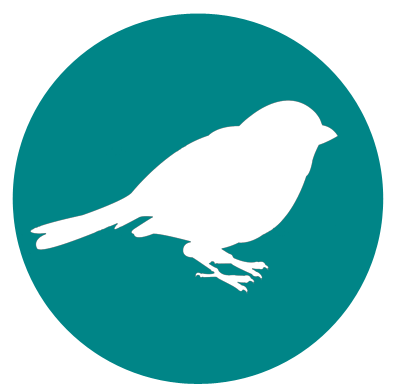Birding at Green Lawn Cemetery
Columbus, OhioGeneral Information
Address
1000 Greenlawn Ave, Columbus, OH 43223
County/Counties
Franklin
DeLorme Page Number and Coordinates
(7th Edition and earlier) page 68; sec. A1
Nearest Town or City
2-3 miles SSW of downtown Columbus, Ohio.
Directions from Nearest Town or City
From I-70, exit at Greenlawn Avenue. Turn west, proceed about .75 miles to the cemetery entrance.
About Green Lawn Cemetery
This park-like cemetery covers 360 acres and was established in 1848. Both topography and vegetation contribute to create a variety of habitats for both migrating and resident birds. There are a few areas, however, that are most popular for birdwatching. Some allow for birding from the comfort of your car, while others require sturdy shoes and heavy-duty mosquito and poison ivy protection.
1. Upon entering the cemetery, you will see the office on the right. Park behind the building and check the ravine and woods behind it. This may require some sturdy footwear should you decide to enter the ravine itself. The easiest route is from the north east side after walking the perimeter. This is an excellent area in spring for thrushes and warblers of all kinds. It would not be uncommon for find Ovenbirds, Hooded, and Mourning Warblers here. Watch also for nesting Cooper’s Hawks and Red-bellied Woodpeckers.
2. Just outside the entrance, on the south side of the road, is an open field recently planted for prairie restoration. The wooded perimeter is good for spring migrants and is one of the most reliable areas for Mourning Warbler later in migration. The grassland area can attract mating Woodcocks. It is not recommended that you walk south through the wooded area. This is private property and is posted.
3. Coming out of the office parking area, follow the red line in the road. After it bears left, turn right at either the third or fourth road (sections 47 and 85) to park at the “pit.” This is a limestone quarry, which supplied much of the stone for the roadways in and, reportedly, the entrance to the cemetery. A good landmark here, which can be seen from much of the cemetery, is the large, orange-roofed Hayden Mausoleum. This pond has been planted with shrubs and trees that provide cover and food to many of the migrants. It is also the location of a kiosk on the west end, where you will find a map of the cemetery and bird lists as well as feeders which local birders usually keep supplied with seed and suet.
In the spring you’ll be lucky to find a parking spot as many birders stop here to explore the area. At the pit, in the spring you’ll find most of the migrants using the cemetery as a stopping place on their journey north. Keep a close lookout especially for Winter Wrens, Pine, Prothonotary, and Wilson’s Warblers. On occasion, Connecticut Warblers have been recorded. This is also a good place for Louisiana and Northern Waterthrushes. It’s hard to miss Fox Sparrows and Rufous-sided Towhees if they are around.
Generally, if an Olive-sided Flycatcher is in the area, it will be here in one of the tall trees overlooking the water. Also in the taller trees are the other migrant warblers, orioles, and tanagers which frequent the area on migration. If you’re lucky, you might find a Whipporwill or Yellow-billed Cuckoo roosting in the denser trees and shrubs.
Winter at this spot can be good because of the feeders. Woodpeckers, including the Hairy and Red-bellied, as well as winter sparrows and finches are frequent visitors. On rare occasions an Oregon race of the Dark-eyed Junco, Rusty Blackbird, Black-capped Chickadee, or Evening Grosbeak may appear.
4. Immediately west of the “pit,” is a low ridge running north and south through much of the cemetery. While it is the final resting place of much of Franklin County’s luminaries of the past two centuries, it is also an excellent spot for spring birding. One spot to look for the roosting Great-horned Owl is in the fir trees behind the Lazarus Mausoleum on the crest. They have been known to nest in a large oak tree near the south end of the ridge. Check out an area north of the pit on the ridge behind the chapel. There is a stand of hemlocks that attracts winter finches, including Red Crossbills during irruptions.
5. Travel southward on the road with the yellow stripes immediately west of the ridge. At the end of the ridge, if you look to the west, you’ll see an iron bridge. Cars are not permitted under it anymore, but feel free to walk this little mini-ecosystem. Often, if a hawk hasn’t just swooped through it, this little ravine is one of the best birding spots in the entire cemetery. In the spring wrens, thrushes, warblers, and sparrows are common. In the winter, look for winter sparrows and woodpeckers. Be sure to keep a close look for Screech-Owl holes or for the owls themselves, roosting in the trees that line the rim of the ravine. The gum trees attract Pine Siskins here and throughout the cemetery. The trees south of the bridge are usually good for migrant songbirds in the spring. At the west end of the bridge is a wet area, if there has been rainfall, which often attracts songbirds – and an occasional shorebird – to bathe and drink. Sit quietly on the bench across the road and watch for them to come out.
6. An area often overlooked in spring migration is the north-west quadrant. Located here are a number of the oldest trees in the cemetery, which are year-round locations for Great-horned Owls and Red-tailed Hawks. Some of these are surviving elms which seem to attract a number of warblers, orioles, and tanagers during migration.
Visiting Information
Closed hours/season
Typically open 8:30-4:00pm. Verify hours before visiting, and be prompt in leaving! Gates may be locked and you’ll have several hours to wait inside for someone to come and let you out – if you can get someone’s attention to get help!
Parking Areas
Parking throughout cemetery. The office asks that the cars remain on the road and not pull off onto the grass.
Fees/Permits
None.
Restroom Facilities
Restrooms are located in the chapel, which is open Monday through Saturday. Visitors are welcome. How often do you get the chance to use the facilities within feet of an original Tiffany stained glass window?
Harmful Insects, Poisonous Plants, or Animals
Abundant mosquitoes; some poison ivy. Do not approach bats, which may be occasionally seen clinging to the walls of mausoleums. They are probably ill. You might notify the office, which might contact the appropriate authorities to check them out.
Restaurants in the Area
About two miles east on Greenlawn Avenue at High Street, there are a BP gas station with a coffee shop and a White Castle restaurant. For more fast food (Wendy’s, McDonald’s, Subway, Chipotle), go north on High. (You cannot turn left onto High from Greenlawn, so must turn north (left) on Front Street, then right on a cross street. There is a light for an easier left turn at High and Whittier.) Excellent breakfasts are at First Watch, next to Chipotle’s on High Street. Non-fast food restaurants, delis, and coffeehouses are in German Village.
Other Useful Information
Should you find yourself disoriented in the cemetery, find a road with red, yellow, or white lines on it. It will take you to an exit.
Other Birding Spots in the Area
Greenlawn Dam and Marina; Greenlawn Bike Path.
Birds of Interest by Season

Winter
Bald Eagle, Great horned and Screech-Owls, Saw-whet Owl (rare), Yellow-bellied Sapsucker, Red-breasted Nuthatch, Brown Creeper, American Tree Sparrow, White-throated Sparrow, White-crowned Sparrow, both Red and White-winged Crossbill (in irruption years), Pine Siskin.
Spring
Early, same as above. Then every Eastern wood warbler occurring in Ohio, including (although not every year) Golden-winged, Kentucky, Connecticut, and Mourning. In addition to the resident Red-tail and Cooper’s Hawks, migrants include kettles of Broad-winged Hawks and occasional Red-shouldered Hawks, which have nested there. Watch for the Columbus nesting Peregrine Falcons passing through.
Also possible to see Yellow-crowned and Black-crowned Night Herons, Red-headed Woodpecker, all Ohio flycatchers (although Yellow-bellied is rare); Winter Wrens; all Ohio thrushes; all Ohio vireos; Scarlet and Summer Tanagers; Rose-breasted Grosbeak; Indigo Bunting; Rufous-sided Towhee; Chipping, Field, Fox, Lincoln’s, and Swamp Sparrows; Rusty Blackbird; Orchard and Baltimore Orioles; and Purple Finches.
Summer
Some special nesters include Red-shouldered, Cooper’s, and Red-tailed Hawks, Red-headed Woodpecker, Eastern Wood Peewee, Eastern Phoebe, Carolina Chickadee, Blue-gray Gnatcatcher, Eastern Bluebird, and Chipping Sparrow.
Fall
Not a well-documented season. Some hawk migration when winds are favorable — observing from the ridge. Many warbler migrants, although numbers seem fewer than in spring. Chimney swift flocks can be very large.

